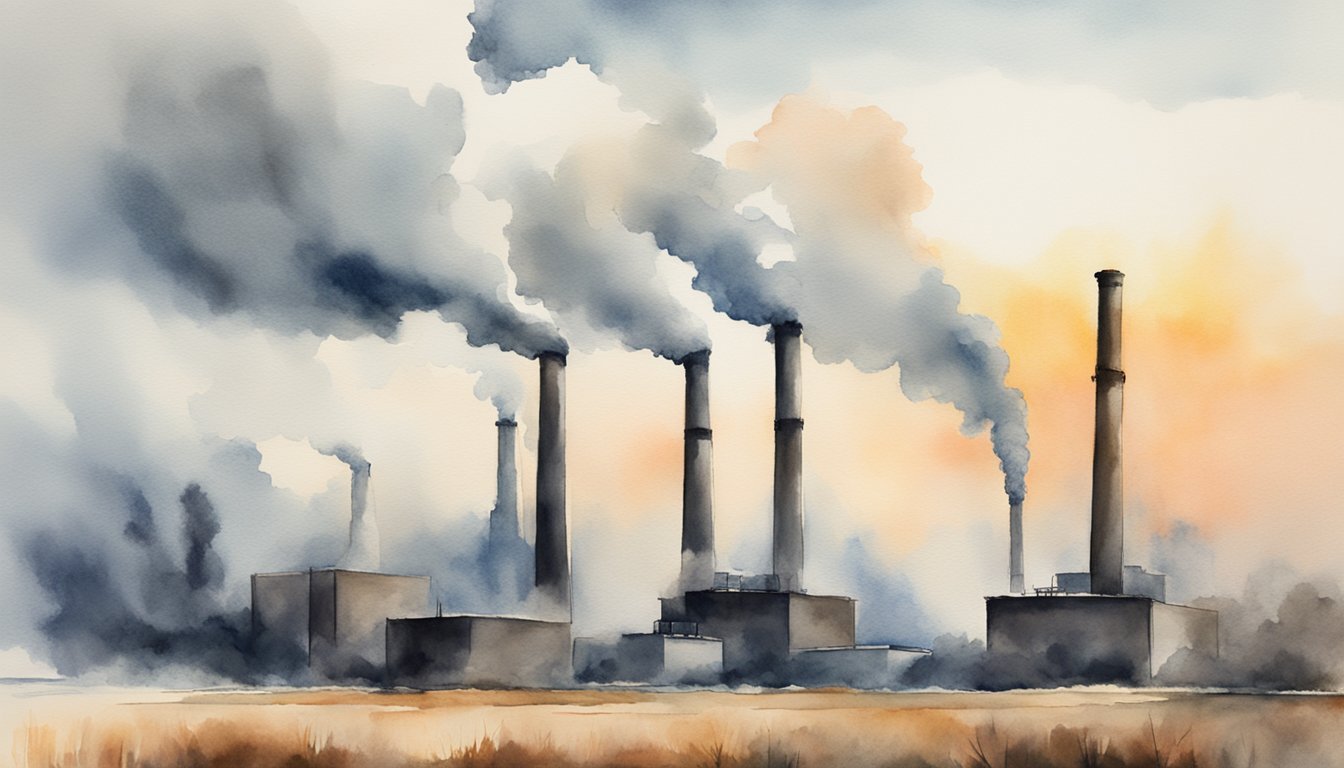Understanding Greenhouse Gases and Climate Change
Greenhouse gases play a crucial role in maintaining Earth’s climate, but an excess can lead to significant climate change. This section explores the various facets of greenhouse gases and their impact on global temperatures.
Composition and Role of Greenhouse Gases
Greenhouse gases include carbon dioxide, methane, water vapor, and ozone. They are naturally present in the atmosphere and are critical for life, trapping heat and keeping the planet’s surface warm enough to sustain ecosystems.
Scientific Evidence on Climate Change
Scientists have gathered extensive evidence to support the reality of climate change. Through ice cores, tree rings, and computer models, they have traced the rise in global temperatures to increased levels of greenhouse gases due to human activities.
The Enhanced Greenhouse Effect
While some greenhouse effect is natural, human activities like burning fossil fuels and deforestation have intensified the phenomenon, known as the enhanced greenhouse effect. This leads to more heat being trapped and less escaping into space, resulting in warming.
Global Warming vs. Climate Change
Global warming refers to the long-term increase in Earth’s average surface temperature due to human-made greenhouse gas emissions. Climate change, however, encompasses a broader range of changes, including variations in precipitation, wind patterns, and extreme weather events.
Human Activities and Environmental Impact

Human activities since the Industrial Revolution have significantly increased the levels of greenhouse gases in the atmosphere, impacting the environment in myriad ways. The burning of fossil fuels for energy, changes in land use, agricultural practices, and industrial processes all contribute to the growing concentrations of these gases, which include carbon dioxide (CO2), methane (CH4), nitrous oxide (N2O), and fluorinated gases such as hydrofluorocarbons.
Greenhouse Gas Emissions from Energy Use
The burning of coal, natural gas, and petroleum for electricity and heat is the greatest source of human-generated greenhouse gas emissions. This energy production contributes to air pollution and smog. Electric power plants that burn coal are among the largest contributors, though emissions from cars, trucks, and planes also play a significant role.
- Energy Use: Fossil fuels currently provide more than 80% of the world’s energy.
- Transportation: Transportation accounts for a significant portion of energy-related emissions, with cars and trucks leading the pack.
Learn more about greenhouse gas emissions from energy use
Deforestation and Land Use Changes
Forests act as carbon sinks, absorbing CO2 from the atmosphere. However, deforestation for agriculture, logging, and urban development releases carbon back into the air and diminishes the planet’s capacity to reabsorb it. In addition, forests lost to deforestation can accelerate rainfall runoff, leading to erosion and reduced water quality.
- Forests: The role of forests in mitigating climate change is significant; the United States, for instance, has witnessed a decline in forested areas over the last few centuries due to human activity.
- Land Use Changes: Changes in land use can impact not only greenhouse gas concentrations but also local ecosystems and biodiversity.
Explore the effects of deforestation and land use changes
Agricultural Practices and Livestock
Agriculture contributes to greenhouse gas emissions through the use of nitrogen-based fertilizers, which release nitrous oxide, and livestock, particularly cattle, which produce methane during digestion. These gases are potent contributors to the greenhouse effect.
- Fertilizers: Nitrogen-based fertilizers are a major source of N2O emissions from agricultural fields.
- Livestock: Methane emissions from livestock, especially ruminants like cattle, are significant due to their digestive processes.
Dig into the impact of agricultural practices and livestock on the environment
Industrial Processes and Waste Management
Industrial activities, especially manufacturing and chemical processing, contribute to the release of greenhouse gases. Waste management, particularly in landfills, also generates methane as organic waste decomposes without oxygen.
- Manufacturing: The production of materials such as cement, steel, and aluminum is energy-intensive and often depends on burning fossil fuels.
- Waste Management: Landfills are among the largest anthropogenic sources of methane in the United States due to the decomposition of organic waste under anaerobic conditions.
Find out more about industrial processes and waste management

